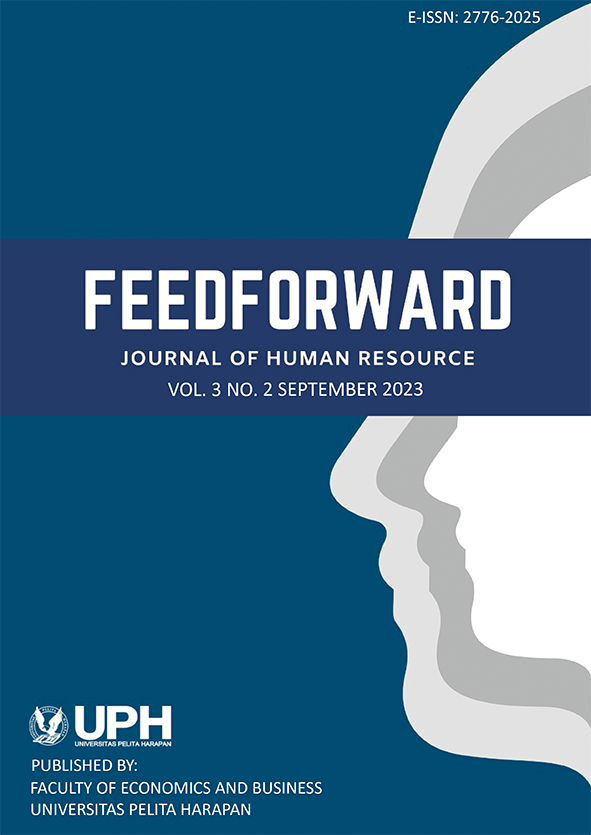PENGARUH CITRA MEREK, E-WOM, DAN KESADARAN MEREK TERHADAP NIAT MEMBELI MIE LEMONILO PADA PENGGUNA MARKETPLACE DI JAKARTA MELALUI LAZADA [EFFECT OF BRAND IMAGE, E-WOM, AND BRAND AWARENESS ON PURCHASE INTENTION OF MIE LEMONILO IN MARKETPLACE USER IN JAKARTA THROUGH LAZADA]
DOI:
https://doi.org/10.19166/ff.v3i2.7447Keywords:
Citra Merek, E-WOM, Kesadaran Merek, Niat Membeli, Brand Image, Brand Awareness, Purchase IntentionAbstract
The purpose of this study was to test brand image, E-WOM, and brand awareness that can affect the intention to buy noodle products. The population in this study were all marketplace users in Jakarta. The sample in this study was 100 respondents using non-probability sampling method with purposive sampling technique. All respondents are consumers that using Lazada to buy Lemonilo. The data collection technique used in this study used a questionnaire distributed through social media. The software used in this study is SmartPLS 3. The results of this study showed that the brand image variable having a positive and insignificant effect on the intention to buy Lemonilo healthy noodle products in Jakarta through the Lazada application. The results of this study also state that the E-WOM variable and brand awareness have a positive and significant influence on the intention to buy Lemonilo healthy noodle products in Jakarta through the Lazada application.
Bahasa Indonesia Abstrak: Tujuan dari penelitian ini adalah untuk menguji citra merek, E-WOM, dan kesadaran merek dapat memengaruhi niat membeli produk mie. Populasi dalam penelitian ini adalah seluruh pengguna marketplace di Jakarta. Sampel pada penelitian ini sebanyak 100 responden dengan menggunakan metode non probability sampling dengan teknik purposive sampling. Teknik pengumpulan data yang dilakukan dalam penelitian ini menggunakan kuesioner yang disebarkan melalui media sosial. Software yang digunakan dalam penelitian ialah SmartPLS 3. Hasil dari penelitian ini menunjukkan bahwa variabel citra merek memiliki pengaruh positif dan tidak signifikan terhadap niat membeli produk mie sehat Lemonilo di Jakarta melalui Aplikasi Lazada. Hasil dari penelitian ini juga menyatakan variabel E-WOM dan kesadaran merek memiliki pengaruh positif dan signifikan terhadap niat membeli produk mie sehat Lemonilo di Jakarta melalui Aplikasi Lazada.
References
Aaker, D. (1991). Managing brand equity. Free Press.
Ajzen, I. (1991). The theory of planned behavior. Organizational Behavior and Human Decision Processes, 50(2), 179-211. https://doi.org/10.1016/0749-5978(91)90020-T
Ajzen, I., & Fishbein, M. (1977). Attitude-behavior relations: A theoretical analysis and review of empirical research. Psychological Bulletin, 84(5), 888-918. https://doi.org/10.1037/0033-2909.84.5.888
Brown, J., Broderick, A. J., & Lee, N. (2007). Word of mouth communication within online communities: Conceptualizing the online social network. Journal of Interactive Marketing, 21, 2-20. http://dx.doi.org/10.1002/dir.20082
Blackwell, R. D., Miniard, P. W., & Engel, J. F. (2001). Consumer behavior. Harcourt College Publishers.
Farzin, M., & Fattahi, M. (2018). eWOM through social networking sites and impact on purchase intention and brand image in Iran. Journal of Advances in Management Research, 15(2), 161-183. https://doi.org/10.1108/JAMR-05-2017-0062
Hair, J. F., Ringle, C. M., & Sarstedt, M. (2011). PLS-SEM: Indeed a silver bullet. Journal of Marketing Theory and Practice, 19(2), 139-152. https://doi.org/10.2753/MTP1069-6679190202
Hendri., & Budiono, H. (2021). Pengaruh brand image, brand trust, EWOM terhadap purchase intention pada produk H&M pada masa pandemi Covid-19. Jurnal Manajerial dan Kewirausahaan, 3(2), 371-379. https://doi.org/10.24912/jmk.v3i2.11881
Kakkos, N., Trivellas, P., & Sdrolias, L. (2015). Identifying drivers of purchase intention for private label brands. Preliminary evidence from Greek consumers. Procedia - Social and Behavioral Sciences, 175, 522-528. https://doi.org/10.1016/j.sbspro.2015.01.1232
Khan, I., & Rahman, Z. (2014). Influence of experiential marketing on customer purchase intention: A study of passenger car market. Management and Labour Studies, 39(3), 319-328. https://doi.org/10.1177/0258042X15572411
Kotler, P., & Keller, K. L. (2016). Marketing management global edition. Pearson Education.
Kudeshia, C., & Kumar, A. (2017). Social eWOM: does it affect the brand attitude and purchase intention of brands?. Management Research Review, 40(3), 310-330. https://doi.org/10.1108/MRR-07-2015-0161
Pavlou, P. A. (2003). Consumer acceptance of electronic commerce: Integrating trust and risk with the technology acceptance model. International Journal of Electronic Commerce, 7, 101-134. https://doi.org/10.1080/10864415.2003.11044275
Sekaran, U., & Bougie, R. (2013). Research methods for business: A skill-building approach (6th ed.). Wiley.
Tang, C., & Guo, L. (2015). Digging for gold with a simple tool: Validating text mining in studying electronic word-of-mouth (eWOM) communication. Marketing Letters, 26, 67-80. https://doi.org/10.1007/s11002-013-9268-8
Yunitasari, H., & Yuniawan, A. (2016). Analisis pengaruh kesadaran merek, persepsi kualitas dan loyalitas merek terhadap nilai pelanggan mobil merek Toyota. Jurnal Studi Manajemen Organisasi, 3(2), 15-28. https://doi.org/10.14710/jsmo.v3i2.4186
Ulrica, T., & Lego, Y., (2019). Pengaruh pengetahuan produk, keterlibatan produk, dan e-WOM terhadap niat pembelian produk Max Factor pada mahasiswi fakultas ekonomi dan bisnis Universitas Tarumanagara melalui website Sociolla di Jakarta. Jurnal Manajerial dan Kewirausahaan, 3(2), 491-499. https://doi.org/10.24912/jmk.v3i2.11896
Downloads
Published
Issue
Section
License
Authors who publish with this journal agree to the following terms:
1) Authors retain copyright and grant the journal right of first publication with the work simultaneously licensed under a Creative Commons Attribution License (CC-BY-SA 4.0) that allows others to share the work with an acknowledgement of the work's authorship and initial publication in this journal.
2) Authors are able to enter into separate, additional contractual arrangements for the non-exclusive distribution of the journal's published version of the work (e.g., post it to an institutional repository or publish it in a book), with an acknowledgement of its initial publication in this journal.
3) Authors are permitted and encouraged to post their work online (e.g., in institutional repositories or on their website). The final published PDF should be used and bibliographic details that credit the publication in this journal should be included.


